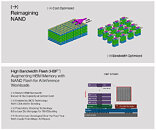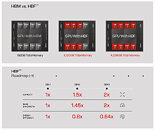
Sandisk Forms HBF Advisory Board for High-Bandwidth Flash Memory Development
Sandisk Corporation today announced the formation of a Technical Advisory Board to guide the development and strategy of its groundbreaking High Bandwidth Flash (HBF) memory technology. The board includes industry experts and senior technical leaders from both within and outside the company. Appointed today, Professor David Patterson and Raja Koduri will provide strategic guidance, technical insight, market perspective, and shape open standards as Sandisk prepares to launch HBF.
"We're honored to have two distinguished computer architecture experts join our Technical Advisory Board," said Alper Ilkbahar, Executive Vice President, Chief Technology Officer, and HBF Technical Advisory Board member at Sandisk. "Their collective experience and strategic counsel will be instrumental in shaping HBF as the future memory standard for the AI industry, and affirming we not only meet but exceed the expectations of our customers and partners."
"We're honored to have two distinguished computer architecture experts join our Technical Advisory Board," said Alper Ilkbahar, Executive Vice President, Chief Technology Officer, and HBF Technical Advisory Board member at Sandisk. "Their collective experience and strategic counsel will be instrumental in shaping HBF as the future memory standard for the AI industry, and affirming we not only meet but exceed the expectations of our customers and partners."







